
- Subject:
- Mathematics
- Material Type:
- Full Course
- Provider:
- Pearson
- Date Added:
- 10/06/2016


Fractions and Decimals
Type of Unit: Concept
Prior Knowledge
Students should be able to:
Multiply and divide whole numbers and decimals.
Multiply a fraction by a whole number.
Multiply a fraction by another fraction.
Write fractions in equivalent forms, including converting between improper fractions and mixed numbers.
Understand the meaning and structure of decimal numbers.
Lesson Flow
This unit extends students’ learning from Grade 5 about operations with fractions and decimals.
The first lesson informally introduces the idea of dividing a fraction by a fraction. Students are challenged to figure out how many times a 14-cup measuring cup must be filled to measure the ingredients in a recipe. Students use a variety of methods, including adding 14 repeatedly until the sum is the desired amount, and drawing a model. In Lesson 2, students focus on dividing a fraction by a whole number. They make a model of the fraction—an area model, bar model, number line, or some other model—and then divide the model into whole numbers of groups. Students also work without a model by looking at the inverse relationship between division and multiplication. Students explore methods for dividing a whole number by a fraction in Lesson 3, for dividing a fraction by a unit fraction in Lesson 4, and for dividing a fraction by another fraction in Lesson 6. Students examine several methods and models for solving such problems, and use models to solve similar problems.
Students apply their learning to real-world contexts in Lesson 6 as they solve word problems that require dividing and multiplying mixed numbers. Lesson 7 is a Gallery lesson in which students choose from a number of problems that reinforce their learning from the previous lessons.
Students review the standard long-division algorithm for dividing whole numbers in Lesson 8. They discuss the different ways that an answer to a whole number division problem can be expressed (as a whole number plus a remainder, as a mixed number, or as a decimal). Students then solve a series of real-world problems that require the same whole number division operation, but have different answers because of how the remainder is interpreted.
Students focus on decimal operations in Lessons 9 and 10. In Lesson 9, they review addition, subtraction, multiplication, and division with decimals. They solve decimal problems using mental math, and then work on a card sort activity in which they must match problems with diagram and solution cards. In Lesson 10, students review the algorithms for the four basic decimal operations, and use estimation or other methods to place the decimal points in products and quotients. They solve multistep word problems involving decimal operations.
In Lesson 11, students explore whether multiplication always results in a greater number and whether division always results in a smaller number. They work on a Self Check problem in which they apply what they have learned to a real-world problem. Students consolidate their learning in Lesson 12 by critiquing and improving their work on the Self Check problem from the previous lesson. The unit ends with a second set of Gallery problems that students complete over two lessons.

Students explore methods of dividing a fraction by a unit fraction.Key ConceptsIn this lesson and in Lesson 5, students explore dividing a fraction by a fraction.In this lesson, we focus on the case in which the divisor is a unit fraction. Understanding this case makes it easier to see why we can divide by a fraction by multiplying by its reciprocal. For example, finding 34÷15 means finding the number of fifths in 34. In this lesson, students will see that this is 34 × 5.Students learn and apply several methods for dividing a fraction by a unit fraction, such as 23÷14.Model 23. Change the model and the fractions in the problem to twelfths: 812÷312. Then find the number of groups of 3 twelfths in 8 twelfths. This is the same as finding 8 ÷ 3.Reason that since there are 4 fourths in 1, there must be 23 × 4 fourths in 23. This is the same as using the multiplicative inverse.Rewrite both fractions so they have a common denominator: 23÷14=812÷312. The answer is the quotient of the numerators. This is the numerical analog to modeling.Goals and Learning ObjectivesUse models and other methods to divide fractions by unit fractions
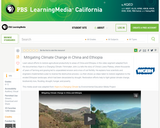
In this video segment adapted from Hope in a Changing Climate, learn how an environmentally devastated ecosystem has been restored, benefiting both the local economy and global efforts to fight climate change.

In this lesson, students will be introduced to Passive Voice through a text: Mobile Phones, and a video: Are You Lost In The World Like Me?, which will show to students information about the use of Mobile Phones and give them some new vocabulary about Technology through a text.It is important that this activity will be implemented in a multi-media room with technological resources: computers and an interactive board (or a video beam in case there is not an interactive board), so that, the teacher can explain the lesson.

Series of videos for elementary students Multiplication Tables Song 1-20 by eLearnin
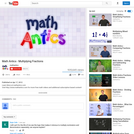
Learn how to multiply fractions, super easy!

In this video segment adapted from NOVA scienceNOW, MIT engineer Dava Newman is working to replace today's bulky, inflated space suits with a radical, sleek design that may one day allow astronauts to walk easily on Mars.

In this seminar, you will learn about various text structures in nonfiction writing and be able to identify which type an author is using. Understanding these structures will help you determine an author’s purpose and allow you analyze (break down) the author’s message or main points. As you get better at identifying different text structures, you will notice these patterns and apply them to different types of writing: articles, recipes, speeches, etc. Some of this information may be a review; that’s a good thing. Be sure to apply that prior knowledge to new experiences here, looking for patterns that seem familiar to you. As you recognize those patterns and apply them to new situations, you will be using a skill called abstracting, which helps you understand new or confusing concepts.StandardsCC.1.2.9-10.B: Cite strong and thorough textual evidence to support analysis of what the text says explicitly as well as inferences and conclusions based on an author’s explicit assumptions and beliefs about a subject.CC.1.2.9-10.C: Apply appropriate strategies to analyze, interpret, and evaluate how an author unfolds an analysis or series of ideas or events, including the order in which the points are made, how they are introduced and developed, and the connections that are drawn between them.CC.1.2.9-10.I: Analyze seminal U.S. documents of historical and literary significance, including how they address related themes and concepts.

Whole numbers are no better than any others! Practice plotting values on the number line as a passionate activist rises up and demands equity for all numbers, including fractions and decimals.
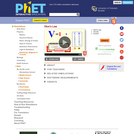
See how the equation form of Ohm's law relates to a simple circuit. Adjust the voltage and resistance, and see the current change according to Ohm's law. The sizes of the symbols in the equation change to match the circuit diagram.
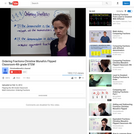
Christine Munafo's Flipped Classroom-4th grade STEM. This video gives instruction and examples to fourth grade students on how to order fractions.
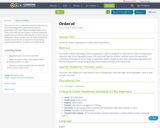
This lesson is about evaluating numerical expressions, and it was designed for adult learners who are preparing to take their High School Equivalency tests. This course will help the students evaluate numerical expressions correctly by following the correct order of operations, which includes the four basic arithmetical operations and the use of exponents and grouping symbols (parentheses, brackets, and curly braces).
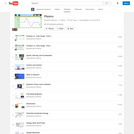
Series of videos that can be used in a Physics class created by Paul Anderson- Bozeman Science

The objective of this lesson is to illustrate how a common everyday experience (such as playing pool) can often provide a learning moment. In the example chosen, we use the game of pool to help explain some key concepts of physics. One of these concepts is the conservation of linear momentum since conservation laws play an extremely important role in many aspects of physics. The idea that a certain property of a system is maintained before and after something happens is quite central to many principles in physics and in the pool example, we concentrate on the conservation of linear momentum. The latter half of the video looks at angular momentum and friction, examining why certain objects roll, as opposed to slide. We do this by looking at how striking a ball with a cue stick at different locations produces different effects.

Crash Course Government: So political campaigns are a pretty big deal in the United States. For instance the 2012 presidential election clocked in at the most expensive ever - at around $6 billion dollars! Needless to say, money plays a very big role in American elections. So today, Craig is going to take a look at why we have campaigns in the first place, why the campaign seasons run for so long, and of course why campaigns cost so much.
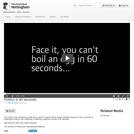
This video is the introductory trailer for a series of videos which capture political experts at The University of Nottingham rising to the challenge of defining a political concept in 60 seconds.
Warning this video will contain bloopers
The School of Politics and International Relations

In English we use the ending -ing on verbs to indicate we are doing them right now. In Spanish, we also use specific grammar to indicate you or someone else is doing something right now. In this seminar you will be learning present progressive. Before you jump into conjugating the present progressive tense, you may want to review your conjugations for the verb "estar."ACTFL StandardsCommunication: Interpersonal Communication, Presentational CommunicationComparisons: Language ComparisonsLearning TargetI can answer questions about what I am doing and what I did.Habits of MindThinking and communicating with clarity and precisionCritical Thinking SkillInternalize
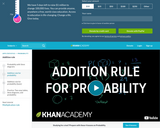
The addition rule for probability is explained using Venn Diagrams. [Probability playlist: Lesson 3 of 29]

In this project, you will explore a real-world problem, and then work through a series of steps to analyze that problem, research ways the problem could be solved, then propose a possible solution to that problem. Often, there are no specific right or wrong solutions, but sometimes one particular solution may be better than others. The key is making sure you fully understand the problem, have researched some possible solutions, and have proposed the solution that you can support with information / evidence.Begin by reading the problem statement in Step 1. Take the time to review all the information provided in the statement, including exploring the websites, videos and / or articles that are linked. Then work on steps 2 through 8 to complete this problem-based learning experience.